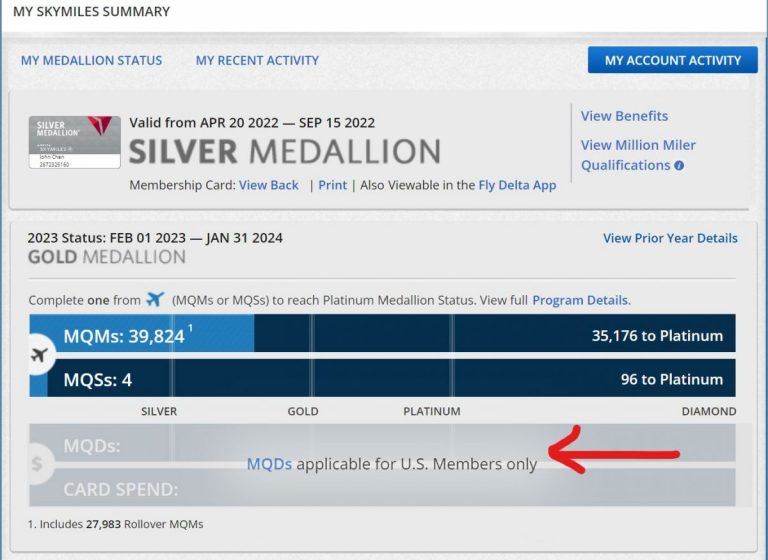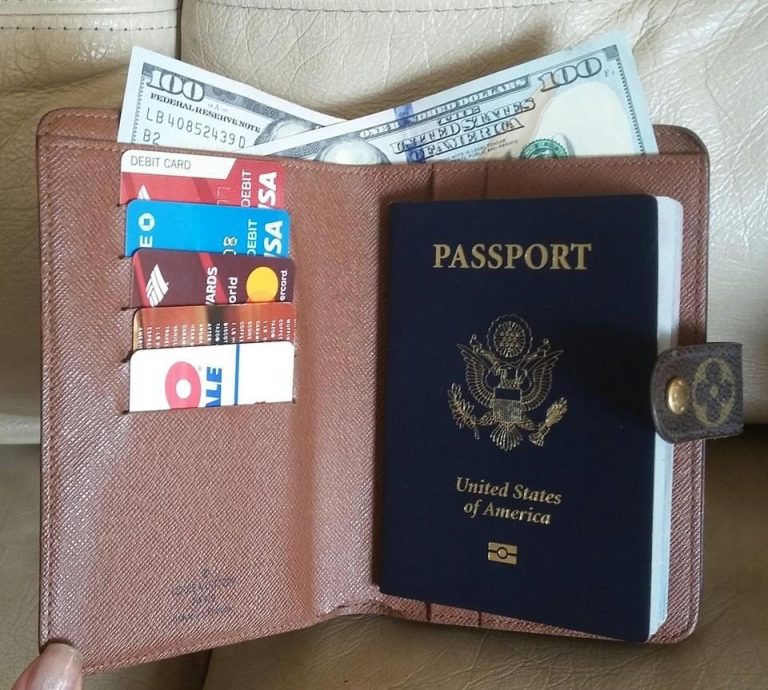I still remember when the Chase Sapphire Reserve exploded onto the scene in 2016. The market for premium credit cards was dominated by one player only, the AMEX Platinum so when Chase decided to enter the race, it was a revolutionary time. Unlike the AMEX Platinum that only really earned 1x on most purchases, the Sapphire Reserve felt like a cheat code: a rich welcome bonus, real travel protections, 3X on both dining and travel basically everywhere, and an easy-to-use $300 travel credit that quietly erased a good chunk of the annual fee.
For years I recommended it without hesitation to anyone that had the credit score to get it. It revolutionized the credit card landscape and remained at the top my throne of cards for 9 years straight.
Enter 2025.
As of June 23, 2025, Chase rolled out the most dramatic refresh in the card’s history: the annual fee jumped from $550 to $795, the earning structure changed, and a stack of new lifestyle credits arrived—many split into semiannual or monthly windows, and many tied to U.S. partners, U.S. reservation systems, or brands with limited reach once you relocate overseas.

If you’re an expat, a long-term digital nomad, or anyone who spends most of the year living outside the United States, these changes matter. The headline number—$795—is jarring enough. The deeper issue is usability: how many of those shiny new credits can you actually use if your day-to-day spending happens in Madrid, Bali, Cape Town, or wherever you’ve planted yourself? After digging through the issuer materials and early reporting, my conclusion is blunt: for most people living abroad, the new Sapphire Reserve is harder to justify than ever.
This blog post will talk about all the new changes happening to the Sapphire Reserve and walk you through my thought process on how these changes affect my situation. You’re situation may not be the same as mine but hopefully it allows you to think why the changes may or may not be beneficial to you!
A Quick Look Back: Why Sapphire Reserve Became a Travel Legend
The original value story was so clean you could explain it on a bar napkin: pay a premium annual fee, get $300 back automatically on broad travel, earn 3X on both travel and dining (worldwide), enjoy Priority Pass lounges, transfer Chase Ultimate Rewards to high-value airline and hotel partners, and redeem points through the Chase portal at a reliable 1.5¢ each. That combination was unusually simple to maximize, and even casual travelers could get good value.

For years, the CSR had an annual fee of $450 but after the travel credit, it was essentially a $150 card. In 2021, the annual fee was raised to $550 but even then it was only a $250 card.
Those fundamentals—especially the automatic travel credit and broad dining multiplier—helped the card become a default choice for frequent flyers and food-motivated city travelers alike. In the early years I used the card all over the U.S., then across Europe and Asia, rarely thinking about category coding. It just worked.
2025 Overhaul: Higher Fee, New Earning Tiers, and a Stack of Credits
Chase’s June 23, 2025 refresh did three big things at once: it raised the annual fee to $795; it reshuffled earning rates (with new 8X on travel booked through Chase Travel and 4X on flights and hotels booked directly, but only 1X on “other travel” that falls outside those lanes); and it layered in a bundle of lifestyle, dining, entertainment, and subscription credits that Chase pegs at over $2,700 in potential annual value.
Existing cardmembers who had the card before June 23, 2025 transition on October 26, 2025, and see the higher fee at their next renewal after that date; new applicants after June 23 are under the new pricing and features immediately. If you’re holding the card already and live abroad, you effectively enter a grace window: you can weigh whether to keep, downgrade, or cancel before your renewal hits at the new $795 price point.
Chase Sapphire For Business
In addition to the new Sapphire Reserve, Chase also came out with a new product in the Sapphire Reserve Business. This is the premium level business card that Chase had lacked for so long. I’m not sure why they didn’t keep the Ink name for their existing business cards collection (Ink Reserve sounds much better) but here we are.
The new Sapphire Reserve Business comes with a whopping 200,000 points sign on bonus after spending $30k in 6 months. This minimum spend requirement is pretty substantial making it out of reach for many. The card also comes with a $795 annual fee like the personal version and offers almost all of the same benefits and credits.
Why did the new CSR Changes happen?
The Chase Sapphire Reserve was a victim of its own massive success. JPMorgan never anticipated the demand it got when it introduced the CSR a decade ago. So many affluent and points conscious people opened the card leading to losses in the billions of dollars for JPMorgan. Of course, they are still a wildly profitable company so don’t feel bad.
A lot of people will make the decision to keep or cancel the card in the coming months. For those that decide to cancel, it’s the natural attrition Chase wants as those customers taking advantage of the cards elite points earning rates and redemptions are long term not profitable for the company.
The New Credit Stack: Shiny for U.S. Users, Questionable for Me
Chase’s refresh pivots the Reserve toward a lifestyle credit book model—think semiannual dining vouchers, monthly promos, streaming subscriptions, ride credits, and partner-specific rebate buckets. That’s a trend across high-end cards, but it creates a real divide between people who live in major U.S. metros (where the partnerships are dense and brands ubiquitous) and those of us who now call another country home.
Most of the pro credit card churners call this the coupon book model. AMEX was the first to embrace these changes with their refreshed AMEX Platinum many years ago, and Chase is the next one in line.
Let’s go line by line through the headline credits and flag their real-world usefulness if you’re outside the U.S.
$300 Annual Dining Credit (Sapphire Reserve Exclusive Tables)
This is structured as $150 in statement credits from January–June and another $150 from July–December, usable at restaurants in the Sapphire Reserve Exclusive Tables network—reservations surfaced through OpenTable and curated in partnership with The Infatuation and the Visa Dining Collection. The catch? The currently promoted footprint is concentrated in major U.S. cities (think New York, Los Angeles, Miami, Chicago, and similar dining hubs). If you live in Europe or Asia you may find zero or vanishingly few eligible options, and flying back to the States to unlock a dining credit isn’t realistic value.
As someone that will probably spend very little time in the US going forward, these credits are essentially useless. If I decided to keep the card, I would probably call my parents twice a year and tell them to treat themselves to a meal in their town (under $150 of course).
I can see Chase adding more restaurants in the future globally, especially in places like London and Mexico City. However, even this won’t be useful for me as I spend most of my time is spent living in other parts of the world. It will be one of those things that I’d have to go out of my way to take advantage of.
Up to $500 Annual Credit for “The Edit” (Luxury Hotel Collection)
This benefit splits into two $250 semiannual buckets for prepaid bookings through The Edit by Chase Travel, a hand-picked luxury hotel program with properties globally (Chase highlights examples in Ibiza, New York, Bali, and Rome). This credit only applies for stays of 2 nights or longer.

On paper this seems beneficial for someone that travels so much because the portfolio spans multiple continents, and stays come with perks like breakfast, $100 property credits, and potential upgrades.
I thought that I could get value out of this credit which would more than offset the increase the $245 increase in the annual fee. However, I checked out the list of Edit hotels and they are mostly luxury high end hotels around the world. Often times, I choose to stay at more boutique style hotels that are closer to the city center and don’t cost a fortune. I’ve stayed in ultra luxury hotels like the Ritz Carlton Maldives or the Park Hyatt Hadahaa but I paid for these all in points (best redemption value for points in my opinion) .

These Edit hotels are very pricey and they are generally not the hotels I would stay in when traveling. A $1,000 Park Hyatt hotel in Barcelona is a waste of money for me and something I would never spend on a real life basis. The $250 semi-annual credit is nice, but it would only offset a very small percentage of the cost.
If I could find hotels for let’s say $200 a night ($400 for two nights), I could use this credit to offset most of my stay which would have some value. However, I can’t find any hotels for under $300, even in cheaper places like Bangkok or Bali.
Unless you’re the type of person that regularly stays in these types of hotels, you’re essentially forced into staying somewhere more expensive just to take “advantage” of these credits.
$300 Annual StubHub / Viagogo Credit
Chase pairs two $150 semiannual credits you trigger by buying event tickets through StubHub or Viagogo. Viagogo operates internationally, but local ticket ecosystems vary wildly: in some countries service fees are high, and in others the resale market is thin or discouraged. If you tend to buy concert or sports tickets while visiting the U.S., you might capture value; if you’re mostly attending local festivals abroad that sell directly or via country-specific platforms, this credit risks going unused.
Complimentary Apple TV+ and Apple Music (Valued at $250 Annually)
Streaming works everywhere Apple licenses the content—but the opportunity cost question looms. If you already subscribe through an Apple One bundle, switching may be messy; if you weren’t paying for these services, the “credit” has only as much value as you would have willingly spent. Still, unlike the geo-locked dining perks, this is one of the few benefits that can ride along with you globally.
This might be useful for some but I don’t use Apple TV or Apple Music, so it’s a pointless credit.
DoorDash Monthly Promos + DashPass
Chase is touting up to $300 annually in monthly DoorDash promos plus a complimentary DashPass membership extension. DoorDash’s international footprint is limited; coverage outside North America is patchy and often channeled through regional partners. If DoorDash doesn’t serve your city—or if local food delivery apps dominate—this benefit evaporates.
As someone that lives abroad, Doordash credits are useless and something I will never utilize.
Lyft Credits (Up to $120 Annually) + 5X on Eligible Rides
Lyft remains primarily North American. If you’re in Europe relying on Bolt, Free Now, or local taxis; in Southeast Asia using Grab; or in Latin America on Cabify, your Lyft credit sits unused until you return stateside (or to select Canadian cities). Good benefit—wrong continent.
Peloton Membership Credit (Up to $120 Annually) + 10X on Equipment
Peloton’s app is available in many countries, but equipment distribution, membership pricing, and currency billing vary. If you already maintain an app subscription from abroad you may be able to apply the monthly credit; if not, you might ignore it. This falls into the “nice if you’re already in that ecosystem” bucket rather than universal value.
Spend-Unlock Extras (After $75,000 Annual Spend)
Chase added an elite “high-roller” layer: spend $75K in a calendar year and unlock IHG One Rewards Diamond Elite, Southwest A-List + $500 Southwest credit, and a $250 “The Shops at Chase” shopping credit. These are heavily U.S.-tilted (Southwest is U.S. domestic; The Shops is a Chase platform). Unless you put serious U.S. travel volume on the card or want IHG Diamond for long hotel stays, most expats won’t hit the threshold—or won’t care if they do.
Table comparing old vs new Sapphire Reserve benefits
Chase Sapphire Reserve: Old vs. New (2025 Refresh)
| Feature | Old CSR (Pre‑Refresh) | New CSR (June 23, 2025+; legacy converts Oct 26, 2025) | What It Means For Me |
|---|---|---|---|
| Annual Fee | $550 | $795 | Effective out‑of‑pocket after $300 travel credit jumps from ~$250 to ~$495 if you can’t use new U.S.‑centric credits. |
| Authorized User Fee (each) | $75 | $195 | Multi‑user households abroad see total cost spike quickly. |
| Base Travel Earning Structure | 3X on all travel (broad coding) | 8X via Chase Travel; 4X flights & hotels booked direct; 1X “other travel.” | Fragmented international spend (rail passes, ferries, local OTAs) often drops to 1X; that’s a major devaluation outside the U.S. |
| Dining Earning | 3X worldwide | 3X worldwide (unchanged) | Still good—but no longer enough to justify $795 on its own. |
| $300 Annual Travel Credit | Automatic, broad travel categories | Still automatic & broad | Remains the most reliably valuable expat‑friendly benefit. |
| Dining Credit / Experiences | None | $300 annually (2×$150 semiannual) for Sapphire Reserve Exclusive Tables via OpenTable network (U.S.-heavy footprint) | Hard to use if you live abroad and don’t travel back to U.S. dining hubs. |
| Luxury Hotel Credit | None | Up to $500 annually (2×$250 semiannual) when you prepay select properties in The Edit by Chase Travel luxury collection (global footprint) | Potentially useful abroad if you book prepaid luxury stays; useless if you rely on points or pay at checkout. |
| Event Ticket Credit | None | $300 annually (2×$150 semiannual) via StubHub / Viagogo | Mixed: Viagogo is global but coverage/pricing varies; value depends on whether you attend ticketed events in supported markets. |
| Streaming Subscriptions | Not included | Apple TV+ & Apple Music bundle (valued ~$250/yr) | One of the few refresh perks with global utility; still secondary value. |
| Food Delivery Perks | DashPass & periodic DoorDash credits (limited total) | Ongoing monthly DoorDash promos (up to $300/yr) + DashPass | DoorDash footprint thin outside N. America; low expat value unless you visit U.S. often. |
| Rideshare Perks | Occasional Lyft partnership multipliers | Lyft credits (up to $120/yr) + 5X on eligible rides | Lyft is U.S./Canada‑centric; mostly unusable abroad. |
| Fitness / Peloton | Time‑limited promos in past refresh cycles | Ongoing Peloton membership credit (up to $120/yr) + 10X equipment | Depends whether Peloton services/equipment are supported in your resident country. |
| High‑Spend Unlocks | N/A | At $75K annual spend: IHG Diamond, Southwest A‑List + $500 SW credit, $250 “The Shops” credit | Strong only if you use U.S. airlines/shops; low expat relevance unless you travel U.S. frequently. |
| Portal Redemption Floor | 1.5¢ per point on all travel booked through Chase | Replaced by Points Boost: selected redemptions up to 2¢; non‑Boost at 1¢. Legacy 1.5¢ honored for points earned before Oct 26, 2025 (usable through Oct 26, 2027). | Loss of guaranteed 1.5¢ floor hurts as a global “cash‑like” fallback; you must hunt Boost fares or transfer to partners. |
| Transfer Partners | Full Ultimate Rewards airline & hotel partners | Same partner roster | Transfer value unchanged; still a key reason to stay in the UR ecosystem. |
| Lounge Access | Priority Pass Select; early rollout of Chase Sapphire Lounges | Priority Pass + expanding Chase Sapphire Lounge by The Club network; select Maple Leaf access | Still good globally, but many competing premium cards now match or exceed. |
| Travel Protections | Robust (trip cancel/interruption, delay, baggage, primary CDW rental) | Remain core features; terms refreshed in new Guide to Benefits | Still a reason to keep—but claims flow through U.S. benefit admins; maintain U.S. address/bank. |
| Foreign Transaction Fees | None | None | Good for spend abroad (if you otherwise keep the card). |
| Conversion Timeline | Old structure until refresh | New terms apply immediately for apps 6/23/25+; existing cardholders convert at renewal after 10/26/25 | Use the transition window to burn points at 1.5¢ and decide whether to downgrade. |
Earning Changes Matter More Than You Think
Under the refresh, Chase trimmed the old catch-all 3X “other travel” category. Now you get 8X on travel booked through Chase Travel, 4X on flights and hotels booked direct with the airline or hotel, and just 1X on all other travel (cruises through a third-party agent, regional ferries, intercity buses booked at local stations, independent rail passes, etc.).
That devaluation hits me hard because so much non-U.S. travel happens through local channels that don’t cleanly fall into “airline direct” or “hotel direct”—and many of us rely on regional low-cost carriers, boutique guesthouses, or consolidators that may not code the way we expect.
Booking flights and hotels through the Chase Travel portal is largely hit or miss. Often times, you get prices that are higher (sometimes much higher) than what you can find elsewhere on the internet. Chase Travel’s flight engine uses Expedia which is woefully under-resourced especially when you are flying in non-US locations. Not only are many flights missing, but Expedia doesn’t even have many low-cost airlines.
For example, take a look at this flight search for Singapore to Bali on Sep 23, 2025 using the Chase Travel Portal:

You can see that the only options are Scoot and Singapore airlines. But in fact, there are many other airlines that fly this popular route like AirAsia, KLM, Jetstar, and Batik. Here is a simple search on Skyscanner for the same date:

You can see that AirAsia has flights for under $80 and even the Scoot flight is only $86, half of the price on the Chase Travel Portal. This is just one of many examples where I’ve found the Chase Travel portal to be very weak.
Therefore, it’s unlikely I will take advantage of the new 8x points on Chase Travel Portal bookings simply because it’s often times not worth it. There may be instances where the prices are much closer together, but I don’t suspect that will make up for the lost 3x travel category.
I generally do not book hotels, especially through the Chase travel portal. The 3x travel category of the past was really useful for things like Airbnb, train tickets, taxis, tours, and flights booked with travel agents like Trip.com or the like. I see losing 3x on travel as a particularly big hit, especially with a rise in the annual fee.
Dining remains 3X worldwide, which is good, but given the $795 fee you’re no longer choosing the card just for a 3X dining multiplier unless you redeem points at consistently high value.
Redemption Shift: Farewell Universal 1.5¢, Hello “Points Boost” (Sometimes 2¢, Sometimes 1¢)
The Reserve’s old safety net—redeeming any Ultimate Rewards points through the portal for a reliable 1.5¢ each—is being phased out. In its place, Chase introduces Points Boost, where certain flights or hotels flagged in the portal may price at up to 2¢ per point, while unincentivized bookings fall to 1¢. During a transition period, legacy cardholders (accounts opened before June 23, 2025) can still get the 1.5¢ floor on points earned before October 26, 2025, through October 26, 2027, after which the Points Boost model fully rules.

I’ve played around with this feature and you can find 2x points boost redemptions on business class flights with airlines like Emirates which is something I would consider. However, I don’t often times fly Business because it takes up so many points (I have a lot but it goes quickly when you fly Business).
I’m more of a quantity over quality type of guy as I travel so much. I often times used the 1.5x points boost feature in the past because transferring points to airline programs to redeem on economy flights was not that useful. Often times, it was much better points proposition to simply buy an economy flight on the Chase Travel portal using the 1.5x bonus.
Travel Credit: Still the Hero—But Not Enough to Save the Card
The $300 annual travel credit remains automatic and broad: qualifying travel charges post and are reimbursed without extra clicks, and the definition of travel is generally wide (airfare, hotels, transit, tolls, parking, etc.), which is one reason I loved the card originally. That flexibility survives the overhaul and still functions globally because the credit triggers off merchant category coding, not U.S. geography.
However, with the fee now $795, subtracting the $300 credit still leaves you effectively paying $495 before you’ve squeezed any value from the new stack of U.S.-heavy lifestyle perks. That’s a tough sell if you spend most of your year outside the States and won’t touch DoorDash, Lyft, U.S. dining networks, or U.S. ticket marketplaces.
Lounge Access: Solid, But Not Differentiating Anymore
Sapphire Reserve continues to include entry to the growing Chase Sapphire Lounge by The Club network (currently concentrated in U.S. airports, with more planned) and Priority Pass access to 1,300+ lounges worldwide, plus select Air Canada Maple Leaf Lounges when eligible. That’s useful—but lounge access at this scale is no longer the differentiator it once was; competing premium cards now offer overlapping or broader lounge networks of their own.

I’ve only used one Sapphire lounge in the last 5 years (the one in Hong Kong) and while it was super nice, I don’t see myself taking advantage of these lounges much in the future as they are mostly US centric. I’ve also read so many posts about how the Sapphire lounges are overcrowded with wait times which seems like an issue that’s plaguing a lot of US lounges.

Travel Insurance & Protections: Good, But Read the Fine Print
One reason many travelers cling to the Sapphire Reserve is for its insurance: trip cancellation/interruption (up to stated caps), trip delay (after 6 hours), baggage delay, primary auto rental collision damage waiver (global), emergency evacuation, and more—when you pay for the trip with your card. The coverage activates when you’re 100+ miles from home (terms vary by benefit), and many protections are available worldwide, which is still a meaningful edge in the premium card space.
That said, the claims process is administered through U.S. benefit providers; documentation requirements can be fiddly, and reimbursement is typically in U.S. dollars to a U.S. account. If you maintain a U.S. billing address (required to hold the card) and a U.S. bank link, you’re fine; if you’ve severed most U.S. financial ties, navigating claims from abroad can be cumbersome.
Authorized User Fees Jump Too
If you shared your Reserve with a partner or family member, note that authorized user fees rise from $75 to $195 each under the new structure. That pushes total annual outlay even higher for globally mobile households.
This is not something that really makes a difference for me as I have no authorized users but I could see how this might alter the equation for others!
Putting It All Together: Realistic Value Math for Me
Let’s do a sanity check. Suppose you live in Spain (or anywhere outside the U.S.) and keep a U.S. mailing address purely for credit card billing. What do you actually capture?
- You almost certainly use the $300 travel credit—call that full value.
- You probably use 3X dining as a points-earning category, but the incremental value over a no-fee 1X card depends on how you redeem.
- You get Priority Pass lounges—but so do multiple lower-fee cards.
- You might or might not book prepaid luxury properties through The Edit; if not, you lose up to $500 in theoretical value.
- The U.S. dining network credit? Often unusable.
- StubHub/Viagogo semiannual credits? Maybe one event while visiting family stateside; maybe none.
- DoorDash and Lyft monthly promos? Likely zero unless you spend extended time in North America.
- Streaming and fitness credits: nice extras, but hardly a reason to pay $495 net.
When you strip out the credits you can’t easily use, you’re left paying nearly five hundred dollars a year for an automatic travel credit, decent multipliers (now more restrictive), transfer partners, and insurance you must remember to trigger correctly. That value proposition is markedly weaker than it was pre-refresh.
Alternatives That Work Better When You Live Abroad
If you’ve moved your life overseas, you want simplicity, global acceptance, and benefits you can actually capture where you live—not a stack of coupons expiring in U.S. time zones. Here are cards that tend to work better for expats.
Capital One Venture X Rewards
The Venture X charges a $395 annual fee, includes a $300 annual travel credit for bookings through Capital One Travel, awards 10X on hotels and rental cars and 5X on flights booked through the portal, and earns 2X on everything else, which becomes your reliable catch-all for unpredictable foreign merchants. Lounge benefits include Capital One Lounges and Priority Pass. For a global lifestyle, flat 2X everywhere plus a lower fee can be easier to optimize than chasing split U.S. credits on the Reserve.
The Platinum Card® from American Express (Global Variants)
Amex Platinum remains expensive (U.S. version $695; country fees vary), but it’s built around global lounge access through the Amex Global Lounge Collection (Centurion, partner lounges, Delta Sky Clubs when flying Delta, Priority Pass, Plaza Premium, and more), plus extensive travel credits and elite status tie-ins. Crucially, Amex layers Global Dining Access by Resy with an international footprint that continues to expand—useful if you’re abroad and want premium tables without flying back to the U.S. While Platinum’s earning rates aren’t broad category multipliers, many expats carry it for the lounge network and status benefits, then pair it with a separate high-earning everyday card.
Personally, I’ve not really found much use for AMEX Platinum from even when I was living in the US. The earnings multipliers are just not that great. The Delta lounge and Centurion lounge access was the only useful part of this card but these lounges have long become limiting and packed.
This card is also likely to see an annual fee increase close to the 4 digit range so I suspect the math behind the AMEX Platinum will continue to elude those who spend most of their life abroad.
What is my strategy with the new Sapphire Reserve?
If you decide to exit the Sapphire Reserve but don’t want to orphan your Ultimate Rewards balance, consider downgrading to a Chase Sapphire Preferred (lower fee) or even a no-annual-fee Freedom product before cancelling; that preserves your points until you decide how to redeem or transfer.
As I have multiple Chase Ink credit cards, I am able to transfer my Chase points stash to those cards to preserve all my work. However my plan in the future will be to ultimately transfer my points, downgrade the Sapphire Reserve to a Freedom card, wait a few weeks to be safe, and then reopen the Sapphire Preferred to pocket the sign on bonus.
If your CSR annual fee is before October 26, 2025 (mine is in August 2025), you’re grandfathered into the old annual fee of $550 but receive the credits of the new $795 version. I will likely not use any of the benefits of the new card but if I can keep the old annual fee for another year, it’s still worth it for me.
I will then make the decision to cancel the card in August 2026.
Final Verdict: Great Lifestyle Card for U.S. Residents, Tough Sell for Expats
The new CSR is clearly engineered to compete in the ultra-premium U.S. lifestyle credit arena: splashy dining networks, entertainment rebates, streaming bundles, ride credits, even fitness tie-ins. If you live in New York or Los Angeles and dine out, rideshare, and hit concerts regularly, you can claw back the $795 annual fee surprisingly fast.
But if your life is now abroad—the tapas bars of Spain, the hawker stalls of Singapore, the surf cafés of Bali—the U.S.-centric credit stack gathers dust. You’ll still get the $300 travel credit, 3X dining, lounge entry, and strong travel protections, but paying an effective $495 net for those alone is hard to rationalize when lower-fee global cards deliver most of what you actually use.








